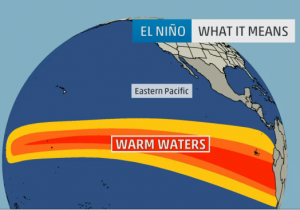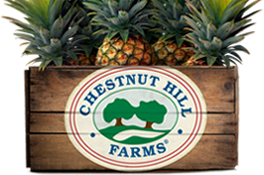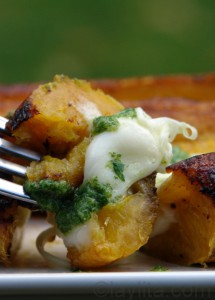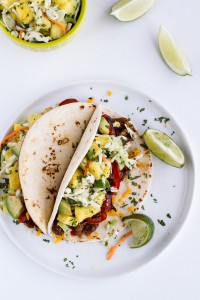-
Featured Posts
- St. Patrick’s Day Pineapple Punch
- Sheet Pan Perfect Pineapple Ham
- Can A Pineapple Really Live Under the Sea?
- Say Aloha to Our Hawaiian-style Ham and Pineapple Pasta Recipe
- Holiday Joy, Hanukkah, and Pineapple Kugel
- What are China’s Pineapple Science Awards?
- Fuel Up with Paleo Pineapple Fried Rice
- Best Gluten-Free Pineapple Upside Down Cake
- Piña Colada Pie in a Jar
- Slow Cooking Your Pineapple This Fall
Featured
Holiday Treats: Easy as Pie
What’s the best part about the upcoming holiday season? The answer is as easy as, well, pie, actually!
Homemade, baked goods are one of the many wonderful traditions Thanksgiving and Christmas – literally – bring to the table. Today’s recipe shows us exactly why.
Hot out of the oven from Fork Vs Spoon is a Pineapple Pie recipe that is sure to add to the list of favorite pies on your holiday spread later this year.
Here’s what you’ll need:
PINEAPPLE PIE
INGREDIENTS
- 2 Cups All-Purpose Flour
- 1 Teaspoon Salt
- 2 Tablespoons Granulated White Sugar
- 12 Tablespoons Unsalted Butter, diced, and frozen.
- ¼ Cup Vegetable Shortening
- ½ Cup Ice Cold Water
- 1 – 20 ounce Can Crushed Pineapple with juice
- ½ Cup White Granulated Sugar
- 3 Tablespoons Corn Starch
- pinch of salt
- Milk
- Sugar
Check out Mal’s recipe page here for directions and more details.
Enjoy,
Dr. Lloyd
Vitamin C: Pineapples Say A Mouthful
It’s pretty well known that Vitamin C is an essential nutrient. Some might even argue that Vitamin C is the “power-house vitamin.” Doing everything from serving as an antioxidant that protects the body from free radical damage to boosting the immune system, Vitamin C is vital in building human tissue and repairing it.
Pineapples are a great source of Vitamin C! Due to their high Vitamin C content, pineapples can positively assist a plethora of bodily functions. (Here’s some to name a few).
In today’s post, we wanted to focus specifically on how pineapple consumption can benefit oral health. That’s right. Your tongue knows what’s good for it!
Aside from its delicious taste, this lip-smacking fruit’s Vitamin C contribution can even reduce your risk of gingivitis and periodontal disease. Vitamin C also increases the body’s ability to fight invading bacteria that contribute to such oral diseases, especially gum disease.
Does it replace going to the dentist? You wish. Of course not! But with a toothbrush, floss and –surprisingly– a few slices of pineapple a day, your mouth will be thanking you!
Dr. Lloyd Berg
Posted in Featured, Tips & Tall Tales
Tagged health, vitamin C
Boo! A Freakishly Healthy Halloween Snack
It’s the week of Halloween and you’ve just had a terrifying epiphany…there is absolutely no candy in the pantry! You can’t believe it. You’ll need to run out and grab a few bags for those ravenous trick-o-treaters before it’s too late.
Yet, on your way to the store you’ve started to think about it. “Do I really want my kids to eat THAT much candy in one sitting?”
We hear you! For any parent out there looking to give their kids a bit more of a healthy dose of Halloween, we have the recipe just for you!
Created by Family Fresh Meals.com this Candy Corn Fruit Bowl has all the perfect Halloween trimmings without the scary ingredients.
What you’ll need?
– The Perfect Pineapple, cut into bite sized chunks
– oranges, cut into bite sized chunks
– whipped cream
– candy corn
{I’m sure you know what to do from here, but just in case, check out the full recipe via Family Fresh Meals.com for more details.}
Happy Halloween!
Dr. Lloyd
Posted in Featured, Recipes, Tips & Tall Tales
Tagged halloween, recipe
Come Visit Us @ Booth #459 This Weekend!
In Atlanta for the weekend? Well if you are, you’re in for a real treat!
The 2015 PMA Fresh Summit kicks off tomorrow, Friday, October 23 at the Georgia World Congress and with it a gatherings of the industry at the world’s largest produce trade show.
Chestnut Hill Farms will be exhibiting during the event (#Booth 459) and will be joined by local juice experts, Rawesome Juicery. Together, we’ll be serving up some of the tastiest cold-press juices on the floor. Recipes featuring The Perfect Pineapple were created by Rawesome Juicery and include:
The Refresh: Pineapple, Mint, Lime, Apple, Chlorophyll
The Pura Vida: Pineapple, Orange Juice, Cactus Fruit, Ginger
The Pain Killer (Smoothie): Pineapple, Coconut Cream, Orange Juice, Nutmeg
Why juice? As our partners at Rawesome so eloquently put it:
“When we consume whole foods our system immediately recognizes it as familiar and can utilize its nutrients immediately.
This is the number one reason why everyone should juice! It allows the system to rest and catch up on other issues in the body that need repair. Fresh pressed juice is absorbed within minutes, giving your system a reboost of vital vitamins and minerals.”
If you’re around, please stop by and say hello!
Hope to see you there,
Dr. Lloyd
Posted in Featured, Tips & Tall Tales
Tagged health, PMA
Pineapples: So Versatile, It’s Scary!
With Halloween just around the corner, we thought it might be fun to show our readers a creative alternative to the standard Jack-O-Lantern. Instead of carving a pumpkin this year, try slicing a pineapple into a slightly scarier form.
Like a werewolf during a full moon, The Perfect Pineapple can actually be very spooky once a year and, we think, quite possibly a better candidate for this annual doorstep tradition.
I mean, come on. A pumpkin just brings its roundness to the (carving) table, but a pineapple? A pineapple comes pre-made with a pretty creepy face and a kooky top hat!
Don’t believe us? Give it a whirl tonight in preparation for next week’s big bash. Simply pick up a pineapple at your nearest grocery store and follow these simple steps, demonstrated by this short stop-motion tutorial.
The results might just be terrifyingly good.
Happy Halloween!
Dr. Lloyd
Posted in Featured, Tips & Tall Tales
Tagged DIY, halloween, tips
Keep Heart Healthy
In the United States alone, there are more than 3 million cases of vascular disease reported each year. Often associated with vascular disease are blood clots. Now let’s be fair – blood clots are healthy and lifesaving when they stop bleeding. But they can also form when they aren’t needed. That’s when things get tricky. Blood clots can also cause a heart attack, stroke or other serious medical problems.
Why do blood clots form? Causes of blood clots may include certain heart conditions, pregnancy, prolonged immobility, smoking, certain medications, surgery and inherited blood clotting disorders.
For some of those causes, there’s not much you can do to prevent a clot from possibly happening. But for others, believe it or not, pineapple can help!
A proactive and very natural approach, consuming pineapples has been proven to reduce the risk of blood clots by thinning the blood. Get ready, because here we go with that bromelain again. (It’s a very, very busy enzyme)!
Bromelain helps to trigger an anti-inflammatory response. Because of their bromelain levels, pineapples can help reduce excessive coagulation of the blood. This makes pineapple a good snack for frequent fliers, pregnant women, long-time “sitters” and others at risk for blood clots.
Actually, this is one reason why you will almost always see flight attendants have a full stock of pineapple juice.
Neat fact, right? The more you know!
Dr. Lloyd
Posted in Featured, Tips & Tall Tales
Tagged bromelain, health
Recipe: Baked Plantains with Cheese
In America, we love our cheese. It is true that the French lead the world’s average per person cheese consumption (a whopping 57 pounds per year!), but it’s also true that Americans like to put cheese on everything. Not shy about our own dairy desires, Americans consume an average of 23 pounds of cheese per year. And who can blame us? Cheese is delicious!
In celebrating American Cheese Month this October – yes, it’s a real thing – we’ve decided to give the people what they want: something cheesy!
This recipe, featuring our very own plantains and yummy mozzarella, is actually common in many places outside of the United States. Traditionally eaten at breakfast or brunch, Laylita.com has made our hearts melt with this delectable baked take on a fried staple of Latin America.
A simple dish that doesn’t take much, here’s a (short) list of ingredients:
Ingredients
6 ripe plantains, whole
1-2 tbs melted butter or oil, use as little as you want
6 thick slices of mozzarella
Optional garnish:
Aji criollo or cilantro hot sauce
For a complete recipe and detailed instructions, check out the full recipe here.
Mmm. Now smile and say…cheese!
Enjoy,
Dr. Lloyd
The Plantain’s Past
In addition to recipes and prep tips, we at Chestnut Hill Farms like to educate our readers about every aspect of the fruit they purchase from us. It’s part of our company culture. We want our customers to be as passionate about the products we sell as we are! We’re even crazy enough to give those visitors to Lloyd’s Corner a science tutorial on El Niño. (We know…it was a tough one).
Much like our previous post on pineapples, the history of the plantain is fascinating. It’s had its very own world tour. Yet, in this instance, the origins of the plantain can be found on the other side of the globe.
As AfricanFoods.co reports:
“Around 327 B.C, Alexander the Great came in contact with this fruit during his world conquest and introduced it into Europe. The plantain eventually found its way from Malaysia and India to Madagascar through trading Asian and Arab merchants during the Trans-Saharan trade boom… [It] became a very important factor in the wealth, prosperity and rapid expansion of the Bantu Kingdom of central and southern Africa around 1500 AD. To date, the plantain is still a major and popular staple meal across Uganda and the rest of the former Bantu region. The history of the banana and plantain in the Caribbean has also been traced to the activities of the Portuguese Franciscan Monk who is credited for introducing it to the Dominican Republic in 1516, having himself come in contact with this fruit in the Canary Islands, brought there by his compatriots about a hundred years earlier.”
Since then, the plantain has become a staple product in many countries across several continents. From Asia to Africa, to many parts of Latin America, and even among communities in the United States, the plantain is widely eaten year-round.
And now you know!
Dr. Lloyd
Posted in Featured, Recipes, Tips & Tall Tales
Tagged fun facts, history
Recipe: Hula Pork Fajitas & Pineapple Slaw
Alright, we know – it’s officially fall. Autumn is among us. In a relentless cycle that never fails year after year, we can expect: the Halloween decorations to go up soon, turkeys and cornucopia-themed wreathes to trail shortly behind and finally Christmas lights and inflatable snowmen to be everywhere before you can say “Happy Holidays!”
Where did the lazy days of summer go?! They might be gone, but we technically don’t have to start all of that just yet. We have a few more days until October. And to celebrate we’ve decided to throw ourselves just one more laid-back luau.
With the help of HalfBakedHarvest.com, we’ll be cooking up Hawaiian Hula Pork Fajitas with Pineapple Slaw + Coconut Rice. A tasty mix of sweet and savory, this interesting approach to fajita fillings takes chunks of The Perfect Pineapple™ in the slaw – a colorful and fruity alternative to the regular cabbage crowd.
Here’s what you’ll need:
- Hula Pork
- 3 pounds pork shoulder roast (or butt)
- 2 1/2 cups pineapple juice
- 2 teaspoons ginger
- 2 cloves garlic, minced or grated
- 1/2 cup brown sugar, lightly packed
- 2/3 cup soy sauce
- 2/3 cup ketchup, preferably organic
- 1/4 cup rice vinegar
- 2-3 tablespoons sriracha (depending on your taste, I used 2)
- 8-12 flour tortillas, warmed
- 6 ounces sharp cheddar cheese, shredded
- 1 avocado, diced
- Pineapple Slaw
- 3 tablespoons greek yogurt
- 1 tablespoons rice vinegar
- 2 tablespoon fresh pineapple juice
- 1 tablespoon brown sugar
- 1 teaspoon orange zest
- Pinch of salt and pepper
- 2 cups shredded cabbage
- 1/3 cup green onions, chopped
- 3 tablespoons fresh cilantro, chopped
- 1 cup fresh pineapple, diced
- 1 jalapeno, seeded + chopped
- Coconut Rice
- 1 cup uncooked jasmine or basmati rice
- 1 cup light, canned coconut milk
- 3/4 cup coconut water
- 1/2 teaspoon salt
- 3 tablespoons unsweetened, flaked coconut
- 1 tablespoon coconut oil
For a complete recipe and detailed instructions, check out the full recipe here.
It will have you saying, “fall, schmall!”
Enjoy,
Dr. Lloyd
10 Easy Facts to Understanding “El Niño”
Agriculture is dictated by weather patterns. It might be a very simple fact, but nonetheless essential in understanding what, when and how much produce reaches your local grocery store.
Weather phenomena such as droughts or hurricanes can severely impact what any farm around the world can produce. In Costa Rica, where our farms are based, recent storms have caused workers to press the pause button on much of our vital agricultural practices. These storms, many have claimed, are due to this year’s El Niño event.
In fact, forecasters from the National Oceanic and Atmospheric Administration (NOAA) announced this past month that this year’s El Niño could become among the strongest on record and will likely last into early spring 2016.

So, what exactly is El Niño and why have you heard it before? Here are 10 quick facts you should know!
- “El Niño” is the name of an occurring, temporary change in the climate of the Pacific Ocean.
When someone says there’s an “El Niño” event this year, they’re talking about unusually warm ocean temperatures recorded in the Pacific region around the equator.
- During a non-El Niño year, warm water storms are usually created in the Pacific Ocean and move westward.
To understand how El Niño changes things, first it’s important to understand what’s considered “normal”. In the Pacific Ocean, the water closest to the equator is warmed by the sun. Wind in the region will blow from east (the Americas) to west (Asia and Australia). These gusts of wind—called prevailing winds—take the newly formed warm surface water temperatures with them, making the water near the Americas, as a result, usually cooler by comparison.
- El Niño is a disruption of this “normal” system. During El Niño, trade winds tend to relax and fail to send the rest of the warm air westward.
As a result, warm water builds and builds in the east “until at some point, the system says, ‘Whoa, too much! I’m going to get rid of it!’” Kevin Trenberth, a climate scientist at the U.S. National Center for Atmospheric Research in Colorado, explains. This is when an El Niño event has the potential to kick in.
- The El Niño change is then marked by higher than average ocean surface temperatures in the Pacific Ocean at the Equator, for at least three months.
All of this commotion happening between west and east trade winds results in warmer than normal surface temperatures. This shift in warmth increases the potential of heavy rains, flooding and disrupted fish habitats near the Americas and creates drought conditions in the western Pacific.
- El Niño’s timing usually follows a pattern each decade.
It usually happens every three to seven years, starting slowly in the Northern Hemisphere’s summer, peaking in its winter and dying off quickly in the New Year.
- El Niño translates to “The Christ Child” in Spanish.
Peruvian fishermen are credited with naming the event after they noticed that every few years, around Christmas, virtually no fish could be found in the unusually warm waters.
- Forecasters can quantitatively state how “strong” an El Niño event can be.
Officially, an event is deemed a weak El Niño event if the sea surface temperatures increases by more than 0.5 degrees Celsius (0.9 degrees Fahrenheit) above normal. At 1.0 degree Celsius above normal, an event is moderate, while anything above 1.0 degrees is considered strong. Currently, this El Niño event is reported at 1.5 degrees Celsius above normal.
- Strong El Niño events can have a major impact on global weather phenomena.
More frequent and intense storms and heavy rain and snowfall in certain parts of the United States will usually occur as a result of a strong El Niño winter. An increase in tropical cyclones in the Pacific and decreased hurricanes in the Atlantic can result as well.
- El Niño developed in March of this year.
Many local Costa Rican operations, like Chestnut Hill Farms, have felt the impact of El Niño. As the event continues to strengthen, the region continues to see major rainfall.
- NOAA provides monthly update for El Niño activity.
Can’t get enough El Niño now that you know what it actually is? The National Oceanic and Atmospheric Administration (NOAA) keeps the world abreast of its latest forecasts. Check them out here.
Dr. Lloyd
*Many facts were taken from both the NOAA’s website and a wonderful explanation by Maria Gallucci of the International Business Times. Read her full article here.
Posted in Featured, Tips & Tall Tales









